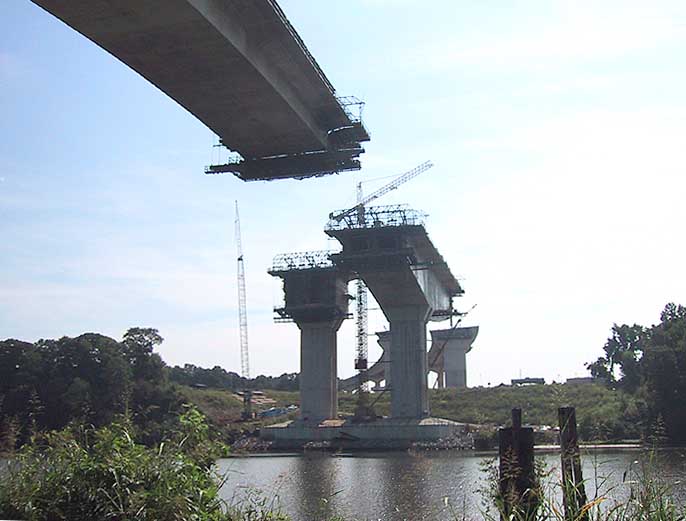
Route 895 Construction - August 2001 - Photos 6-10
Here's more photos of Route 895 under construction, taken by Brett Lomenzo of Blacksburg, Virginia, in early August 2000 and sent to me to be used on my website. Thank you Brett!

Above, standing near west shore of the James River, looking eastward toward main span construction of the Route 895 James River Bridge. The steel structures are the traveling forms used to cast each segment of the main span superstructure, which is being built by the cast-in-place balanced cantilever method. This construction method involves building the main pier, and then successively casting span segments about 10 feet long on either side, using traveling forms, alternating from one side to the other, back and forth, so that the total number of segments currently cast is never more than "N" on one side and "N + 1" on the other side. That is why it is called "balanced cantilever", so the traveling forms house reinforcing steel re-bar and then poured concrete, gradually extending the span outward, constructing from the central point outward, with the total span never being more than just slightly "out of balance"; and finally the construction sequence reaches the side span abutment on the land end, and the middle of the main span in the river end. If you look closely at the various photos I have of the main span of this bridge on other monthly pages (especially the second photo on
Route 895 Construction - June 2001), you will see that each main pier tower actually has TWO vertical piers; there are two vertical piers so that during construction there will be adequate longitudinal support and adequate horizontal rotational support while the spans are built out longer and longer, segment by segment, with the unanchored ends growing longer and longer until they finally meet the next portion of the bridge. Periods of high wind velocity could cause hazardous swaying during the couple months while this balanced cantilever process is going on, and the stabilization of the double vertical pier design prevents that from occurring. There are no other supports such as cables to stabilize these spans as they temporarily arch far outward without end support.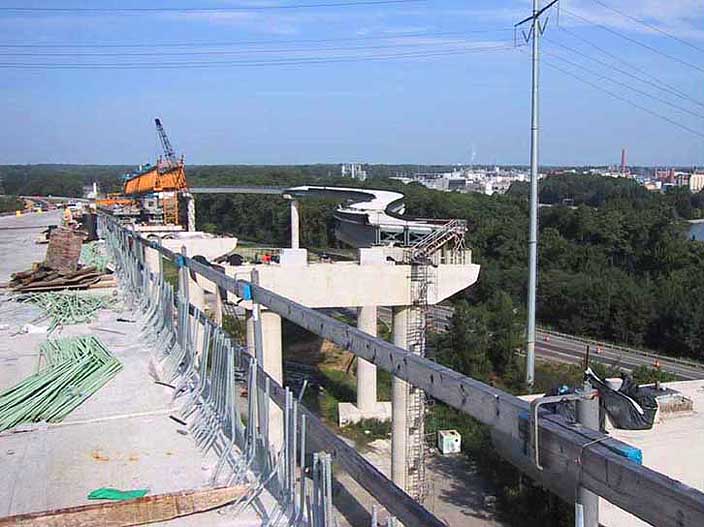
Above, looking west, taken from the eastbound west approach span, looking at construction of the westbound west approach span. These mainline concrete box girder approach spans are being built by the precast post-tensioned segmental method, with the segments being placed by the overhead launching truss which is visible as the yellow structure in the distance above the approach spans. The curving ramp visible is Ramp G, which connects Route 895 westbound with I-95 southbound.
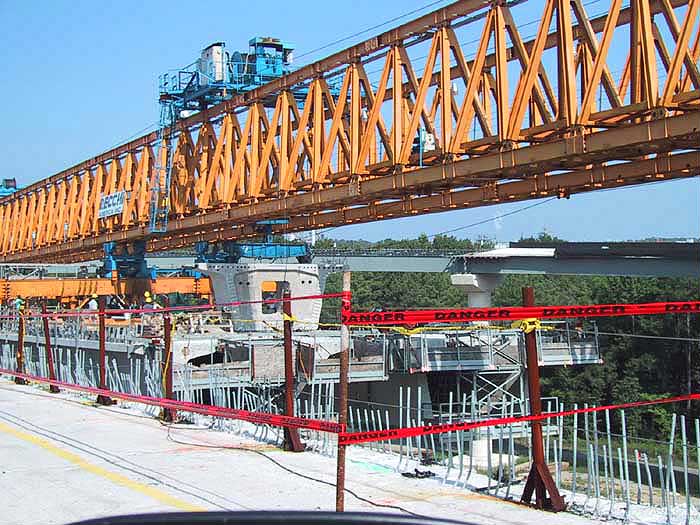
Above, looking west, taken from the eastbound west approach span, looking at construction of the westbound west approach span. These mainline concrete box girder approach spans are being built by the precast post-tensioned segmental method, with the segments being placed by the overhead launching truss which is visible as the yellow structure above the approach spans. You can see a segment presently being carried out to the end of the currently constructed portion, so that the segment can be placed.
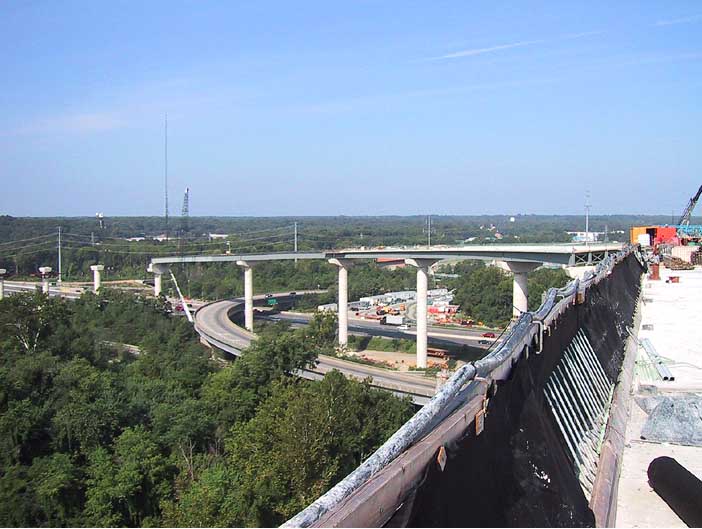
Above, looking west, taken from the eastbound main span of the Route 895 James River Bridge, looking slightly to the south. The high ramp approaching this main span, is Ramp E, and it is the ramp from I-95 northbound to Route 895 eastbound. The lower curving ramp is the existing ramp from VA-150 Chippenham Parkway eastbound to I-95 northbound. VA-150 and Route 895 will form one continuous east-west freeway when all this construction is finished. I-95 is visible between the two ramps. The James River is not visible from this vantage point, and it is hidden by the trees in the foreground.
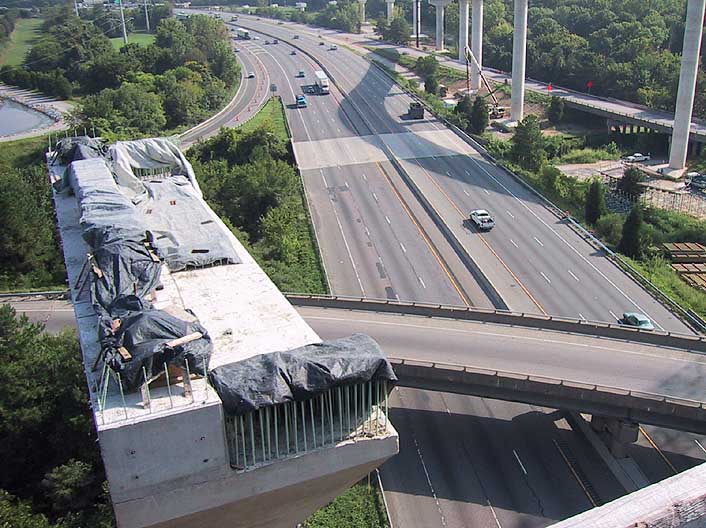
Above, from the eastbound west approach span, looking north, with I-95 down below. The big pier is for the westbound west approach span.
Route 895 Construction - August 2001 - Photos 11-16
Lead page for
Route 895 Construction - August 2001By Scott M. Kozel,
Roads to the Future(Created 8-29-01)